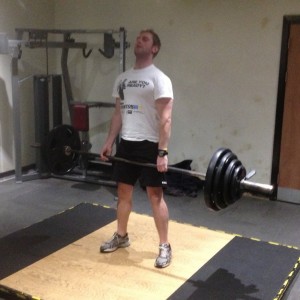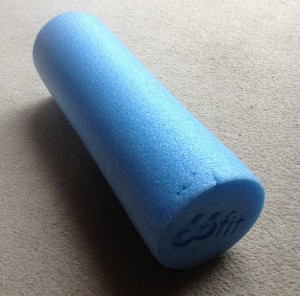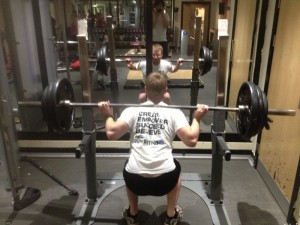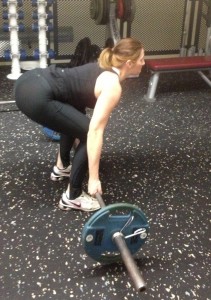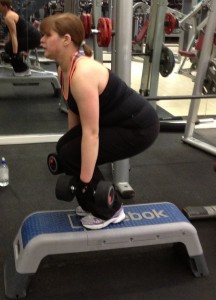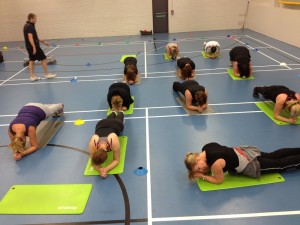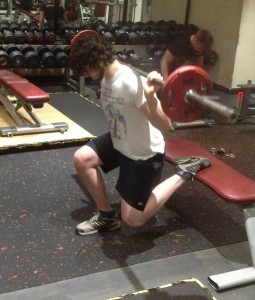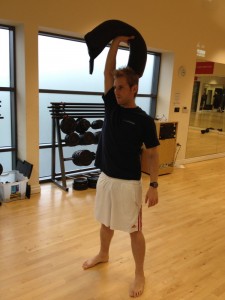Tips to Improve Your Weight Training
Tips to Improve Your Weight Training
If you want to improve your health, fitness and physique, incorporating some form of weight training is a must. Follow these tips to improve your weight training…
1. Strengthen your grip – it’s often the first thing to fatigue.
Having a weak grip limits your progression with many exercises. If your grip fatigues a long time before your target muscles on an exercise such as deadlifts you will seriously limit your rate of strength progression. Many people get around this by using straps, but that isn’t a long-term solution – you aren’t correcting the problem properly.
Spend time performing Deadlifts without straps. Hold onto heavy dumbbells, perform farmers walks and spend a little time at the end of a session working on forearm strength. By strengthening your grip you will become a better lifter across a wide variety of pulling exercises such as deadlifts, pull ups and rows.
Another benefit of strong forearms is the reduction in injury risk at the elbow and wrist. It isn’t new information that strong muscles will offset joint loads, improving performance, reducing injury risk and giving you better overall arm development!
2. Stretch and foam roll. Being flexible allows you to get into required positions for many exercises.
The amount of poor form I see in gyms due to poor flexibility is remarkable. ALL of the top strength and fitness coaches agree on the importance of flexibility and stretching when improving range of movement. Don’t neglect stretching and foam rolling.
A thorough stretching and rolling routine helps to prevent injuries by ensuring the muscles stay supple, knot-free and even helps to remove toxins and waste products. I have written about stretching and to prevent joint injury in this article. Foam rolling is a slightly more thorough massage of the tissues, but evidence suggests it works well. It has certainly helped me a few times.
I personally use this foam roller… 66Fit Elite Foam Roller- Blue, 15 cm X 45 cm.
3. Focus your attention on the worthwhile exercises.
Going to the gym is more popular now than ever, but despite the abundance of advice in the ether, so many beginners do set after set of curls and presses and wondering why nothing is happening in terms of strength and physique progression.
My advice is to become proficient at each of the list below before even attempting to start with isolation exercises….
- Deadlift
- Squat – (Dumbbell or Barbell)
- Incline Bench Press – (Dumbbell or Barbell)
- Pull Up
- Military Press – (Dumbbell or Barbell)
- Lunges – (Dumbbell or Barbell)
- Row – (Dumbbell or Barbell)
If you can get to the point where you are comfortable with each of the exercises above and are able to double your starting weight on all of them, not only will you be a better lifter but you would have made some significant physique improvements, not to mention double your strength!
4. Forget using resistance machines – improve your experience and technique on proper exercises.
There are a number of problem with resistance machines, from the fact that they don’t teach technique (the govern range of movement for the lifter which negates and requirement to exercise correct technique) to the potential injury risk from using them.
Here is a quick list of problems with using resistance machines…
- They allow a lifter to become lazy and rely on the machine to help with direction of the push or pull pattern.
- In some cases they allow the lifter to become strong in the ‘wrong’ places.
- Machines remove much of the role of the stabilising muscles that help with a lift and help prevent injury.
- The pulley systems in many machines don’t give an accurate indication of weight being lifted.
- They remove any potential proprioceptive improvements that are learned from lifting with free weights.
No matter what exercise you are performing on a machine, there will be a more effective free weight equivalent.
5. Use dumbbells to iron out strength indifferences.
Amongst new lifters there is often a huge strength difference between their dominant and non-dominant limb. I have seen new clients fatigue on say, their left side during dumbbell work 4 or 5 reps before they would fatigue on their dominant right side.
The simple solution to this is to use dumbbells where possible. This works by forcing each side to perform reps independently – something that doesn’t always happen with a barbell where the dominant side can still take over most of the work during the lift.
There is also a growing evidence base that suggests that using barbells can cause damage to the joints of the upper limb, in particular the wrist and elbow as they force the hands to over-pronate or supinate which as actually quite an unnatural position, especially under load. I have seen this in clients but haven’t experienced it myself, but still like dumbbells for lots of exercises.
6. Strengthen your core – it will protect your back and technique during weight training.
A strong core allows complete control of posture during all lifts. It allows you to maintain neutral spine throughout the exercise and provides an efficient transfer of power throughout the exercise.
A strong core provides an excellent natural ‘brace’ that protects the spine during exercises. In gyms all over the world you will see people (usually men) lifting with belts when they perhaps shouldn’t.
I have no problem with belts when they are used by experienced lifters going for personal best lifts on exercises such as the deadlift, but they should NEVER be used by beginners on every exercise during their session. Beginners are best served focussing on strengthening their core with a good core programme and by performing deadlifts, squats, lunges etc with a weight they can cope with.
Word of warning – wearing a lifting belt in the gym whilst performing light bicep curls will make you look a fool.
7. Lift a weight you can cope with – too heavy will mean poor technique and increased injury risk.
This one should be obvious but still it is ignored.
Let’s clear something up quickly. Weight lifting isn’t dangerous. Weight lifting with poor technique is. Danger aside, lifting with poor technique is also pointless. If you can’t activate your target muscles during a lift you are wasting your time completely. If you are making the effort to actually go to the gym, you may as well spend your time there productively.
The following are common technique faults – avoid them!
- Range of movement too short – mostly seen on squats and presses.
- Swinging the bar up on bicep curls.
- Rounding the back on deadlifts, cleans and rows.
This video is a guy I helped to improve his technique. This was his ‘before’ video…
and his ‘after’ using a rack pull to teach technique…
For your next workout, reduce your weights and focus on technique, making sure to concentrate on using the muscles you are targeting. You may find out that when you concentrate on correct technique you may have to drop your weights slightly.
8. Don’t neglect your least favourite exercises – sometimes what is important isn’t popular.
There is a long-running joke in fitness about guys who only train their beach muscles – focussing all of their attention on their upper body and completely ignoring their legs. Apart from the fact that not training your legs is severely restricting your ability to grow serious muscle, it’s indicative of a person only doing the exercises they like, not the ones they need.
Not everyone like to train their legs. It’s hard – squats, lunges, jumping etc take a lot of effort! The DOMS from are a constant reminder of the suffering! Then there are exercises such as deadlifts – these lower body compound lifts give the most bang for your buck – they stimulate large areas of muscle to grow and allow for large strength increases.
Sometimes what is important isn’t popular but you need to do it anyway if you want serious results.
9. Practice.
Like any skill, the more you do it the better you become. Weight training is no different – regular execution of the skill improves strength, technique, efficiency and movement. Look at people you admire and see how they train – learn from those better than you.
Practice your weight training with lighter weights, with different kit, in different environments and in different ways – as long as the technique is the same you can practice how you like!
If you are new to fitness or looking to improve your weight training then look at the possibility of hiring a personal trainer or a weight lifting coach – they are the people to speak to if you want to improve your weight training after all!
These tips to improve your weight training are quick, easy to incorporate and can make a difference to your weight training today!
